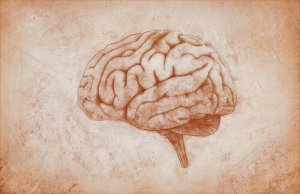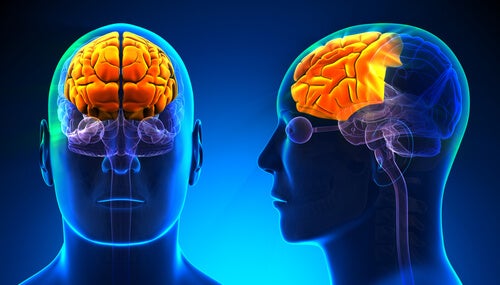The Premotor Cortex: Functions and Characteristics
4 minutes
Empathy and mirror neurons seem to have a place in the premotor cortex.

Last update: 13 July, 2019
Many of us are aware of how complex it is to learn to play an instrument. Our premotor cortex plays a fundamental role in this process and it also helps us learn to drive. The premotor cortex is basically there every time we acquire a new skill.
Among other functions, it helps us elaborate and automate sequences of movements in order to execute tasks efficiently and correctly.
Imagine that a friend is telling you about a negative event that happened recently: his father got sick and died. However, he doesn’t necessarily give you all the information. For example, he would say something along the lines of: “My father was very sick and yesterday…”
Despite this lack of information, you’re able to infer the end of the story and put yourself in his place. It may be because, as various studies indicate, the premotor cortex is also related to mirror neurons and empathy. Would you like to know more? Keep reading!
Where’s the Premotor Cortex?

The brain is divided into four parts known as cerebral lobes:
- Frontal lobe
- Occipital lobe
- Parietal lobe
- Temporal lobe
The premotor cortex is located in the frontal lobe. This lobe is the most recently developed brain structure in human evolution. It’s related to the need to control and coordinate the most complex cognitive and behavioral processes.
To contextualize the premotor cortex a bit more, let’s briefly review the structure of the frontal lobe and its main functions. It’s divided into:
- Lateral. Lateral part of the superior frontal gyrus, middle frontal gyrus, and inferior frontal gyrus.
- Polar. Transverse frontopolar gyri and frontomarginal gyrus.
- Orbital. Lateral orbital gyrus, anterior orbital gyrus, posterior orbital gyrus, medial orbital gyrus, and gyrus rectus.
- Medial: Medial part of the superior frontal gyrus and cingulate gyrus.
Functions of the Premotor Cortex
- Planning
- Behavior control
- Mental flexibility
- Working memory
- Fluency in the search and update of new information.
- Metacognition, which is awareness and understanding of one’s own thought processes.
- Mentalization or the ability to predict what another person will be thinking or doing.
- Social behavior
- Social cognition
(Flores-Lázaro and Ostrosky-Solís, 2018).
Nadia Justel and Verónika Díaz (2012) concluded in one of their investigations that “the premotor cortex and the cerebellum specifically showed a fundamental role in the planning, preparation, execution, and control of sequential bimanual finger movements”.
Thus, the results of this research demonstrate the importance of the premotor cortex in tasks such as playing an instrument, driving, and those that require precision, therefore, the use of both hands.
“Any man could, if he were so inclined, be the sculptor of his own brain.”-Santiago Ramón y Cajal-
In a different study, Pardo-Vázquez and Acuña (2014) researched the involvement of the premotor cortex in decision-making. They concluded that it’s a fundamental structure mainly because it participates in the different stages of the decision-making process.
The neurons of the premotor cortex not only encode the information but also compare it. Not only that, but through this coding and comparison, we readjust and adapt our behavior as we process this information. Therefore, conditioning it to the situation.
Mirror Neurons and Empathy
Empathy and mirror neurons also seem to have a place in the premotor cortex. Research shows that the mirror neurons in this area activate during every action. As if that wasn’t enough, they’re still active when only part of the action is there and the end can only be inferred.
So why is this finding important? Because we don’t just relate to an action when we see it. In addition, we internally generate the motor representation of an action performed by others in the premotor cortex. Therefore, this makes it easier for us to understand others and “read” their intentions. Just what empathy is about (Moya-Albiol, Herro and Bernal, 2010).

Conclusion
The study of the brain represents a great challenge for scientists due to its complexity. Yet, they’re constantly updating information through every new discovery.
The premotor cortex, like the rest of the various brain areas, remains the target of deep and interesting scientific investigations. In this article, we’ve merely exposed the main functions of this brain area. However, it wouldn’t be surprising that, within a few years or, even in a few months, there would be more information.
“It’s important to realize that if certain areas of science appear to be quite mature, others are in the process of development, and yet others remain to be born.”-Santiago Ramón y Cajal-
Knowing our brain and how it works gives us very useful information we can use to take advantage of what may be our most complex organ. For example, knowing that our brain changes gradually as we learn a new skill can motivate us not to give up when we begin to learn. Despite any initial challenges, we know that we’re learning at our mental level. How’s that for motivation? So wake up and learn!
This text is provided for informational purposes only and does not replace consultation with a professional. If in doubt, consult your specialist.








